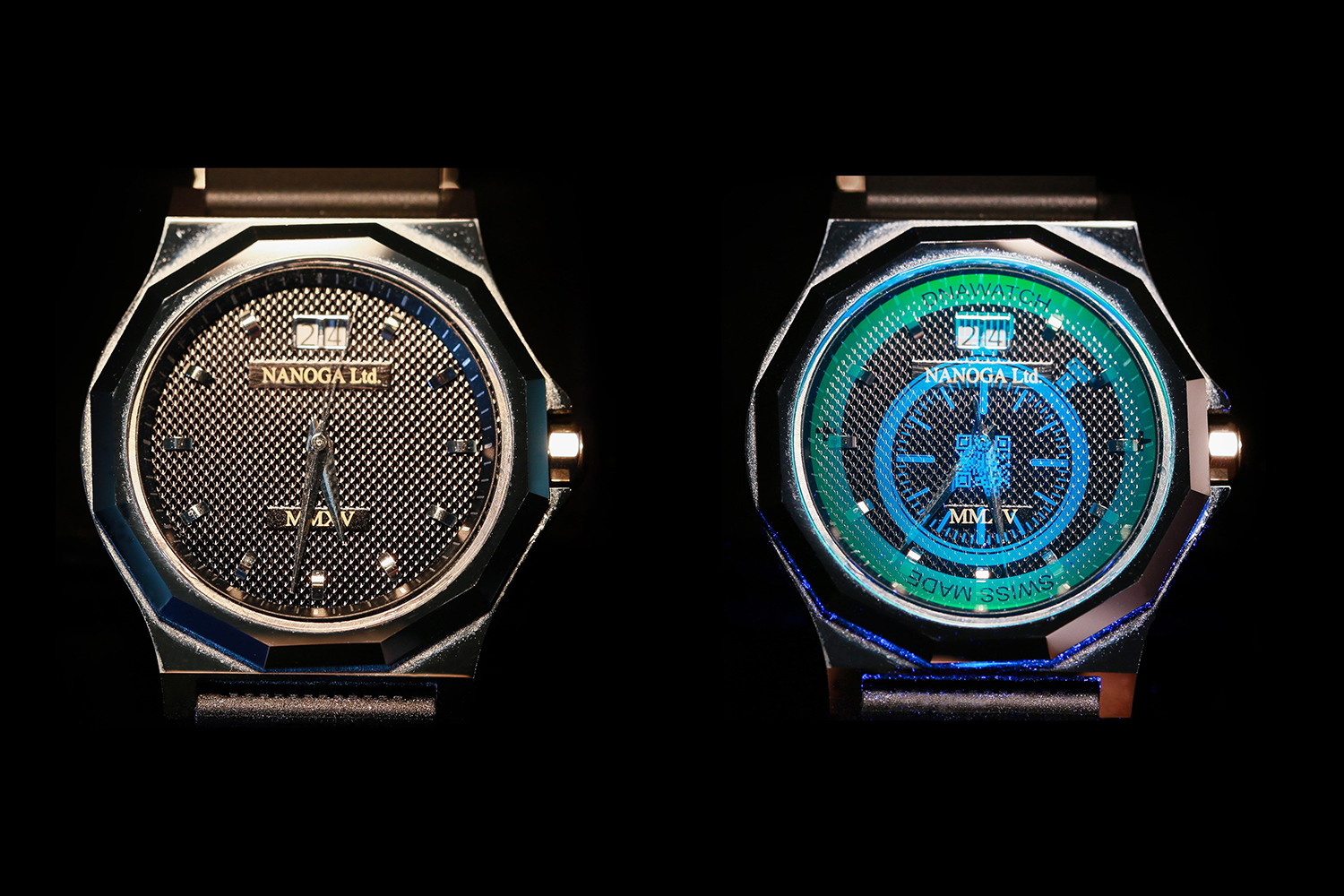Nanoga’s method, dubbed DNAwatch, is impossible to detect with the naked eye, according to a press release from the startup. The process uses state-of-the-art equipment and a proprietary cocktail of chemicals to set layer-after-layer of atoms on the watch surface in the form of a vapor. Specific areas along the layers are then activated to respond to ultraviolet light. The chemical itself doesn’t interfere with the material and, at about one ten-thousandth of the thickness of a strand of hair, hardly leaves a mark.
This sounds complicated because it is. Replicating the DNAwatch watermark is as complex as making a counterfeit Swiss 50-franc note, Nanoga claims.
Nanoga is based at the École Polytechnique Federale de Lausanne, a Swiss research institute that specializes in physical sciences and engineering. The startup insists its method is proven and sound, and it is in the process of acquiring specialized equipment that will enable watch manufacturers to provide Nanoga with the glass and the image that needs watermarking, before the company completes the order and returns the glass. This would mean even classic watches could be watermarked without affecting the watches’ aesthetics.




